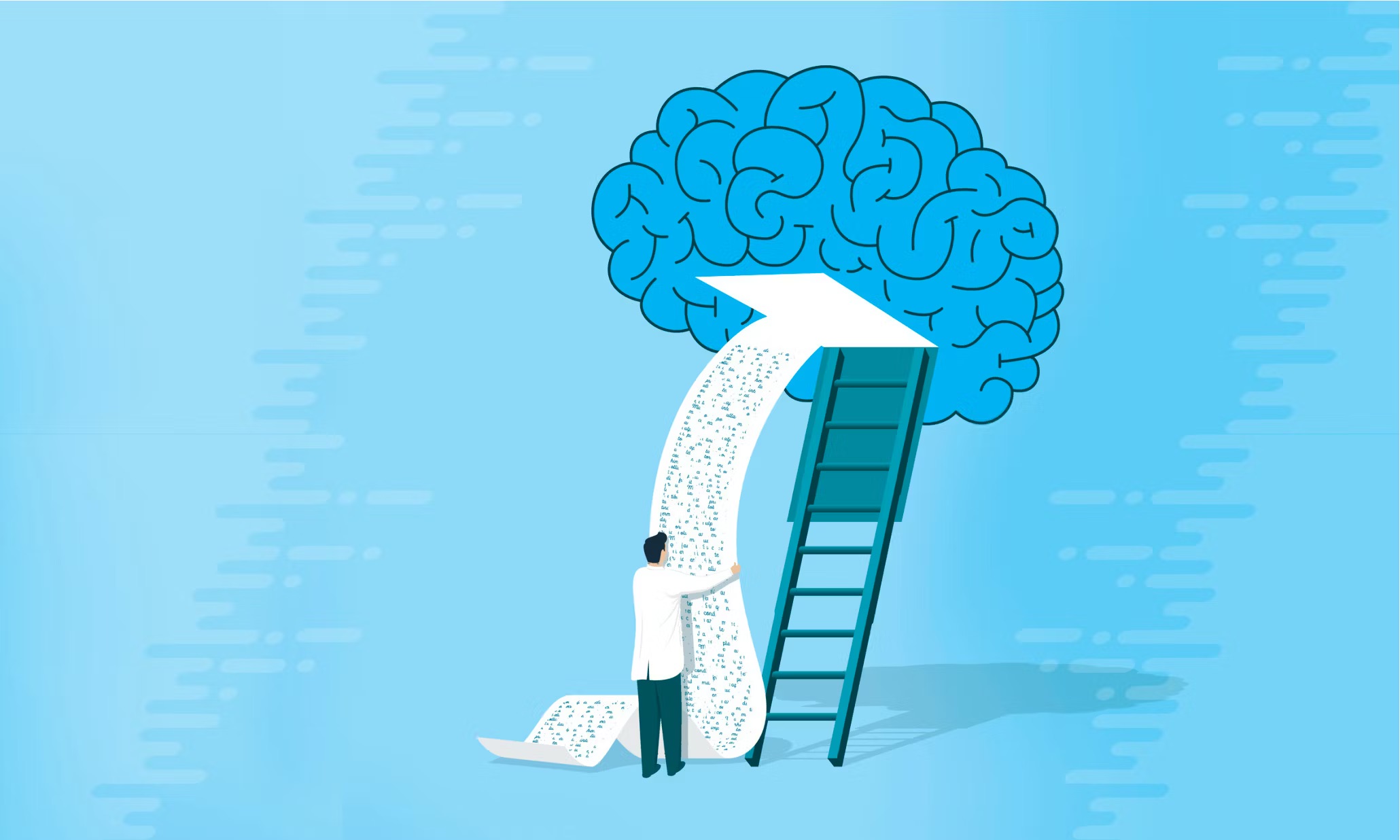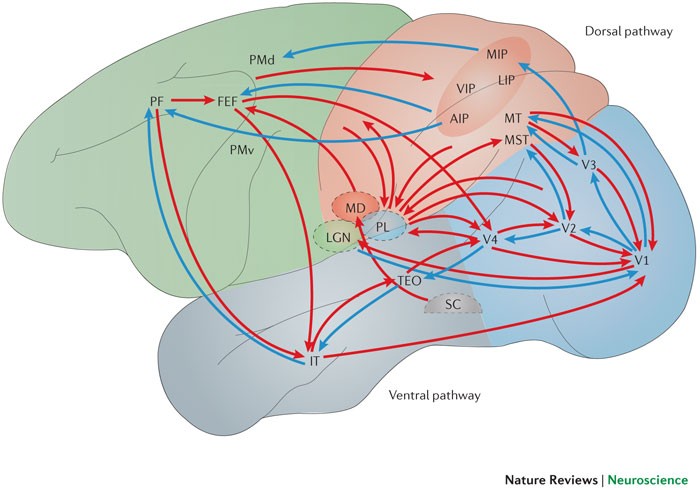- Published on
Visual Perception

Table of Contents
- Hierarchial Organization of Visual Perception
- Low Level Vision
- Ventral Pathway (The "What" Pathway):
- Dorsal Pathway (The "Where" Pathway):
- Neuropsychological Dissociations
- The Psychology of Visual Perception
- Gestalt Principles & The Perception of Groups
- Properties of Visual Perception
Hierarchial Organization of Visual Perception
- Visual Input
- Low Level Vision: Oriented bars, edges, motion, texture, depth
- High Level Vision: recognizing what we see (objects, face, scene)
Low Level Vision
- Single-Unit Recording: This is a method used in neuroscience to measure the electro-physiological responses of a single neuron. By using a fine-tipped electrode probe, researchers can directly record the electrical activity (usually action potentials or "spikes") of an individual neuron.
- By moving objects or light across the receptive field, the neuron's response indicates its preference for specific object placements, based on its firing activity.
- Certain cells exhibit a center-surround property: shining light outside the receptive field's center suppresses the neuron's firing. There are many different cells that each have different things that they respond to

Ventral Pathway (The "What" Pathway):
- Origin & Destination: This pathway begins in the primary visual cortex (located in the occipital lobe) and extends forward to the temporal lobe.
- Function: As its nickname suggests, the ventral pathway is primarily responsible for object recognition and form representation. It helps us identify "what" an object is.
- Involvement: This pathway processes details like color, shape, and fine details, which are essential for recognizing faces, objects, and scenes.
Dorsal Pathway (The "Where" Pathway):
- Origin & Destination: The dorsal pathway originates in the primary visual cortex as well but projects to the parietal lobe.
- Function: The dorsal pathway is chiefly involved in processing the object's spatial location relative to the viewer and guiding actions towards objects. It helps determine "where" an object is in space.
- Involvement: This pathway processes motion and spatial relationships, enabling us to locate objects and coordinate our movements in response.
Neuropsychological Dissociations
- Single Dissociation:
- Definition: Damage to a specific brain region impacts one brain function while leaving a related function unimpaired.
- Significance: Provides limited evidence since it doesn't conclusively prove the two functions are independent.
- Double Dissociation:
- Definition: A lesion in brain structure A affects function A but spares function B, while a lesion in structure B impairs function B but leaves function A intact.
- Significance: Offers compelling evidence for the functional independence of the two operations in the brain.
The Psychology of Visual Perception
Gestalt Principles & The Perception of Groups
- Law of Pragnanz (law of simplicity): we will percieve things in a way that makes it simpler for us to understand
- Figure Ground: elements will be percieved as either figures or ground (the background where figures are)
- Characterizing Meaning within Gestalt Principles
- Proximity, things that are close together are percieved as related than things that are spaced far apart
- Similarity, things that are similar are likely to be related and grouped together
Properties of Visual Perception
- Shape Constancy: correct adjustment for shape of an object even when retinal image changes depending on the viewing angle
- Size Constancy: we adjust for size to see whether things are closer and farther away
- Brightness Constancy: Some things will be seen as darker and lighter based on objects which are in the vicinity
- Authors

- Name
- Apurva Shah
- Website
- apurvashah.org